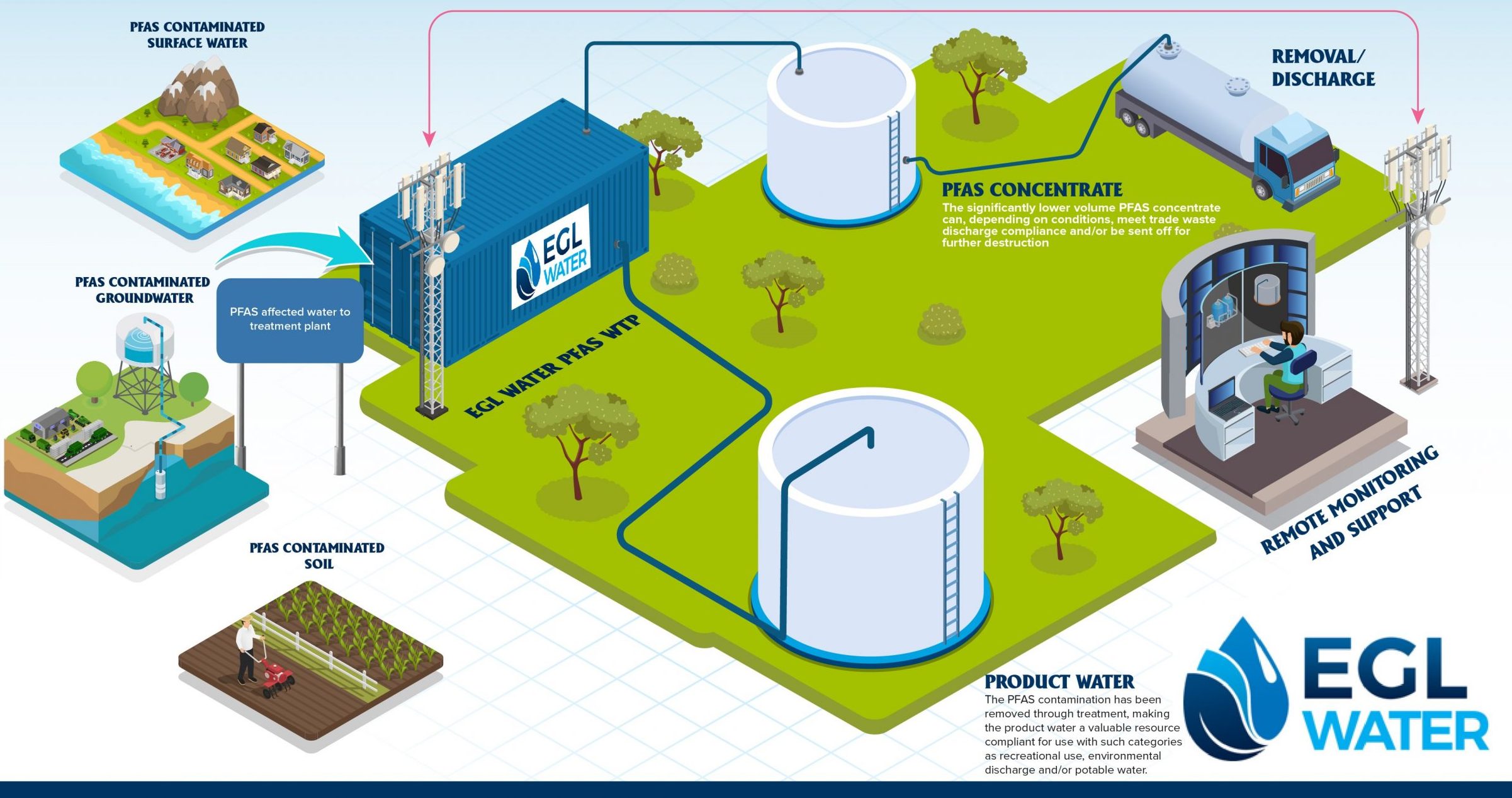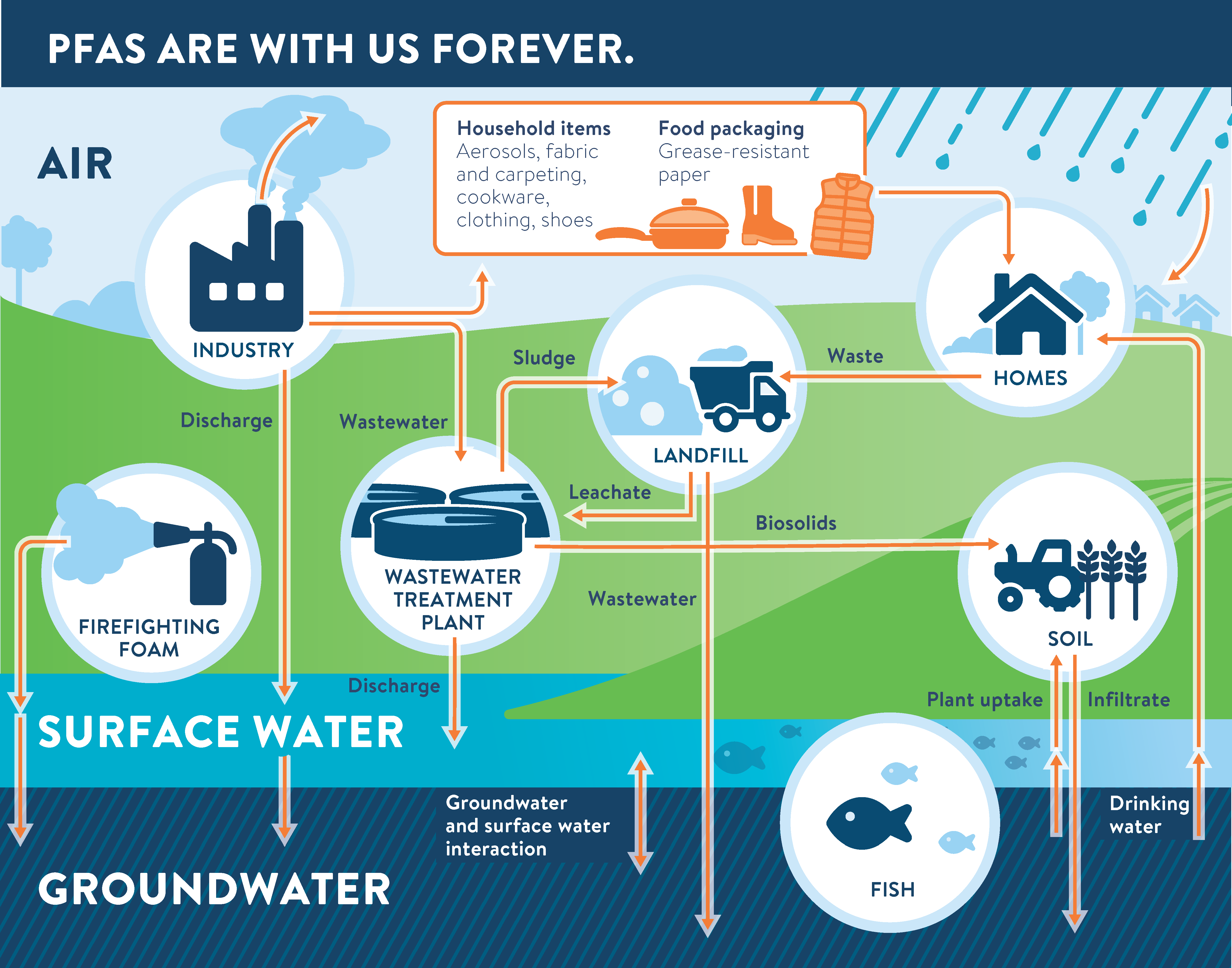Comprehensive PFAS Management in Residential Areas
Comprehensive PFAS Management in Residential Areas
Blog Article
Exactly How PFAS Treatment Guarantees Clean and Lasting Water
The existence of PFAS, generally understood as "for life chemicals," positions considerable challenges to water top quality and public health and wellness. Advanced treatment modern technologies, consisting of turned on carbon adsorption and membrane layer filtering, have actually arised as reliable services to reduce these contaminants. By employing these techniques, communities can not just achieve cleaner water yet also foster sustainable methods that shield environments. The effects of these treatments extend beyond instant health and wellness advantages; they elevate critical inquiries regarding long-term water monitoring methods that must be resolved to ensure a durable future. What does this mean for our approach to water sustainability?

Recognizing PFAS Contamination
PFAS, or per- and polyfluoroalkyl materials, have become a significant ecological concern due to their extensive prevalence and perseverance in the environment. These synthetic chemicals have been used in numerous industrial applications and customer products, consisting of non-stick cookware, water resistant garments, and food packaging, due to their special properties such as water and grease resistance.
The contamination of soil and water sources by PFAS happens mostly via commercial discharges, firefighting foam use, and seeping from landfills. pfas management. When released, these substances are immune to deterioration, leading to their buildup in the atmosphere. This persistence increases essential issues, as PFAS can take a trip cross countries with groundwater and surface water systems, affecting drinking water supplies and communities

Health Risks of PFAS
The persistence of PFAS in the environment elevates substantial wellness problems for individuals exposed to these substances. Referred to as "forever chemicals," PFAS do not damage down quickly and can gather in bodies over time. Research has linked PFAS direct exposure to different unfavorable health results, including body immune system dysfunction, liver damages, and boosted threat of certain cancers - pfas management. Notably, researches have actually revealed raised cholesterol degrees and prospective effect on reproductive and developmental wellness, especially in expectant individuals and babies.
The universality of PFAS in consumer products, such as non-stick pots and pans, water-repellent materials, and food product packaging, further amplifies the threat of exposure. Drinking water polluted with PFAS is a significant worry, as these chemicals can leach right into groundwater sources. Susceptible populations, including kids and those living near commercial sites, might face increased threats due to their developing systems and prospective for greater direct exposure degrees.
As understanding of these health and wellness threats continues to expand, regulative companies are beginning to establish standards for PFAS degrees in alcohol consumption water. Public wellness campaigns are vital to mitigate direct exposure and go to this web-site shield areas from the lasting effects of these hazardous substances.

Ingenious Therapy Technologies
Just how can we efficiently take on the difficulties postured by PFAS contamination in water sources? Cutting-edge treatment technologies are becoming critical services in the quest for clean water. These methods concentrate on the elimination or devastation of per- and polyfluoroalkyl substances (PFAS), which are notorious for their persistence in the setting.
One appealing technique is adsorption making use of innovative products, such as turned on carbon and ion exchange materials. These products have actually shown efficiency in recording PFAS particles from water. Another noteworthy technology is membrane layer purification, which utilizes nanofiltration and turn around osmosis to different pollutants at the molecular degree, therefore providing a barrier versus PFAS.
In addition, progressed oxidation processes (AOPs) use strong oxidants to break down PFAS substances right into safe results. This technique is specifically look these up reliable for dealing with highly polluted water resources. Bioremediation methods, utilizing particular microorganisms, are likewise being checked out to deteriorate PFAS.
As study proceeds, crossbreed systems that incorporate multiple technologies may use enhanced efficiency, attending to the intricacies of PFAS contamination. The advancement and implementation of these cutting-edge therapy modern technologies are crucial steps toward guaranteeing the safety and sustainability of our water resources.
Advantages of Reliable PFAS Therapy
Properly dealing with PFAS contamination in water resources substantially boosts public health and ecological safety. PFAS, frequently described as "for life chemicals," are resistant to degradation and can collect in the human body, resulting in severe wellness dangers such as cancer cells, liver damage, and body immune system dysfunction. By executing reliable treatment methods, areas can lower exposure to these damaging substances, ultimately enhancing the health and wellness results of their populations.
Moreover, successful PFAS therapy adds to the conservation of neighborhood communities. Contaminated water can negatively impact aquatic life and interfere with the delicate equilibrium of neighborhood environments. By guaranteeing tidy water, therapy procedures protect biodiversity and preserve eco-friendly honesty.
In addition, effective PFAS removal can promote public confidence in water quality. When areas are ensured that their drinking water is devoid of damaging pollutants, it promotes a feeling of security and health. This trust is vital for area involvement and assistance for continuous water management initiatives.
Future of Water Sustainability
Amid growing worries regarding water quality and shortage, the future of water sustainability rests on cutting-edge methods and joint initiatives. As areas encounter the impending hazards of contaminants like PFAS, the development of innovative therapy technologies is important. These technologies not only concentrate on the removal of dangerous compounds but also promote the reuse and recycling of water, consequently lowering overall need.
Furthermore, efficient water governance plays an important function in ensuring lasting practices. Policymakers should incorporate scientific research study with regulative frameworks to develop clear guidelines for water use and treatment. Stakeholder interaction, including local his response areas and sectors, promotes a feeling of common duty and motivates sustainable methods across various industries.
Investment in framework is additionally critical; updating aging systems to integrate modern-day filtering and filtration techniques can significantly improve water quality. Additionally, accepting green innovations, such as all-natural filtration systems, can give environmentally friendly solutions.
Inevitably, the future of water sustainability depends on a holistic strategy that incorporates modern technology, policy, and neighborhood involvement. By prioritizing these components, we can safeguard our water sources for generations to come, guaranteeing tidy and lasting water for all.
Conclusion
To conclude, the reliable treatment of PFAS is necessary for guaranteeing clean and sustainable water. By employing advanced technologies such as activated carbon adsorption, membrane layer purification, and advanced oxidation procedures, communities can significantly lower the health and wellness risks connected with these pollutants. Additionally, the combination of these treatment approaches sustains ecological community security and boosts biodiversity. Eventually, robust PFAS treatment approaches contribute to long-term durability in water administration, cultivating public count on water high quality and advertising sustainable techniques.
Report this page